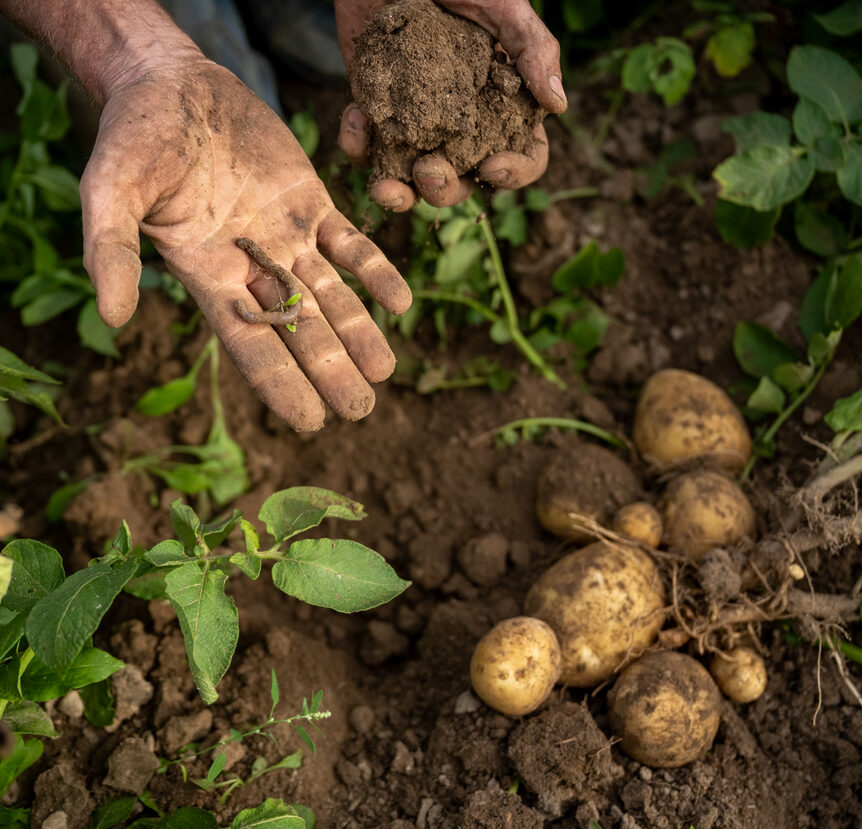One misplaced idea about regenerative agriculture is gaining traction fast. The idea is this: We do not need off-farm biology because it will bring in non-native species, causing an unnatural balance in the soil. This idea, while nestled in good intentions, falls short on the potential of regenerative practices for large scale operations.
This approach perplexes me for several reasons. If American growers were to return to a full native biome model, many would have to abandon corn and soybean crops and allow native hardwood successions to rise to prominence in their fields to promote a “natural return” of the soil. However, this process would take a century or more to take hold. The same goes for biology – we can wait patiently for it to return, but the reality is we have been killing microbial populations for the last 40 to 50 years. Growers need to be actively replacing beneficial organisms instead of waiting for the organisms to come back on their own.
We don’t want to leave the process of biological restoration to chance. Many soils in the US are deficient in bacterial biology. Even if management practices on your farm didn’t kill it, your neighbor’s practices, environmental degradation, and decades of conventional agriculture have eviscerated microbiome populations throughout the country. The desire to restore our soils to their natural state is a lofty goal, but that goal gets even tougher when you expect a monoculture of soybeans to have the biological diversity of a thriving forest. This is where bringing in off-farm inoculation really shines. For example, Spectrum™️ from Tainio Biologicals contains about twenty different species of microorganisms. When was the last time you planted twenty species of crops into your soil?
Let me be clear—I am in no way bashing “natural” inoculants like compost teas. I have worked in agriculture my whole life and I have seen good results from small growers and market farmers who have used them. But it takes time and energy to create effective compost teas, so they may not be economically viable for many farmers.
Bulk compost applications bring their own problems, one of the biggest of which is weed pressure, something compost is infamous for. Even organic compost has its gray areas. Organic compost can come from conventional farms, where cows could be eating GMO corn. Currently, there is no certainty that your organic compost doesn’t have concentrated amounts of glyphosate, which would be detrimental to any grower’s attempt at fostering soil biology.
The goal of regenerative agriculture can be boiled down to this: to grow healthier soils that lead to ever increasing results with fewer inputs, at less cost from the farmer’s pocket. Everyone starts this journey at a different point. While you might have to dump on a ton of biology in the first year, during the next season you’ll begin to see a compounding result on your investment as these biological populations begin to sustain themselves. If you find that you need to re-inoculate in increasing amounts for 15 years in a row, something has gone awry. Somewhere along the way biology is lost and we need to discover why.
Our approach at AEA focuses on obtaining more response from less material. With the inclusion of off-farm biology and other regenerative practices, growers can take the next steps in their journey towards healthier, more profitable growing.
Thanks for reading!
Jason Stoll is a Senior Agronomist at AEA.
Establishing microbial populations in your soil is critical to your success, which is why AEA formulated the Regenerative Soil Primer.
The Regenerative Soil Primer can help:
- unlock the nutrients needed for crop quality and disease resistance
- boost microbial populations
- increase cover crop success
- digest crop residue more rapidly
- decrease instances of overwintering disease
The Regenerative Soil Primer is a single application combining three products:
- Spectrum
- Rejuvenate
- and SeaShield
Subscribe to get each blog post to your inbox.
You'll get each post to your inbox (~1x/week).
You may unsubscribe at any time. We value your personal information. Here's our Privacy Policy.
"*" indicates required fields


